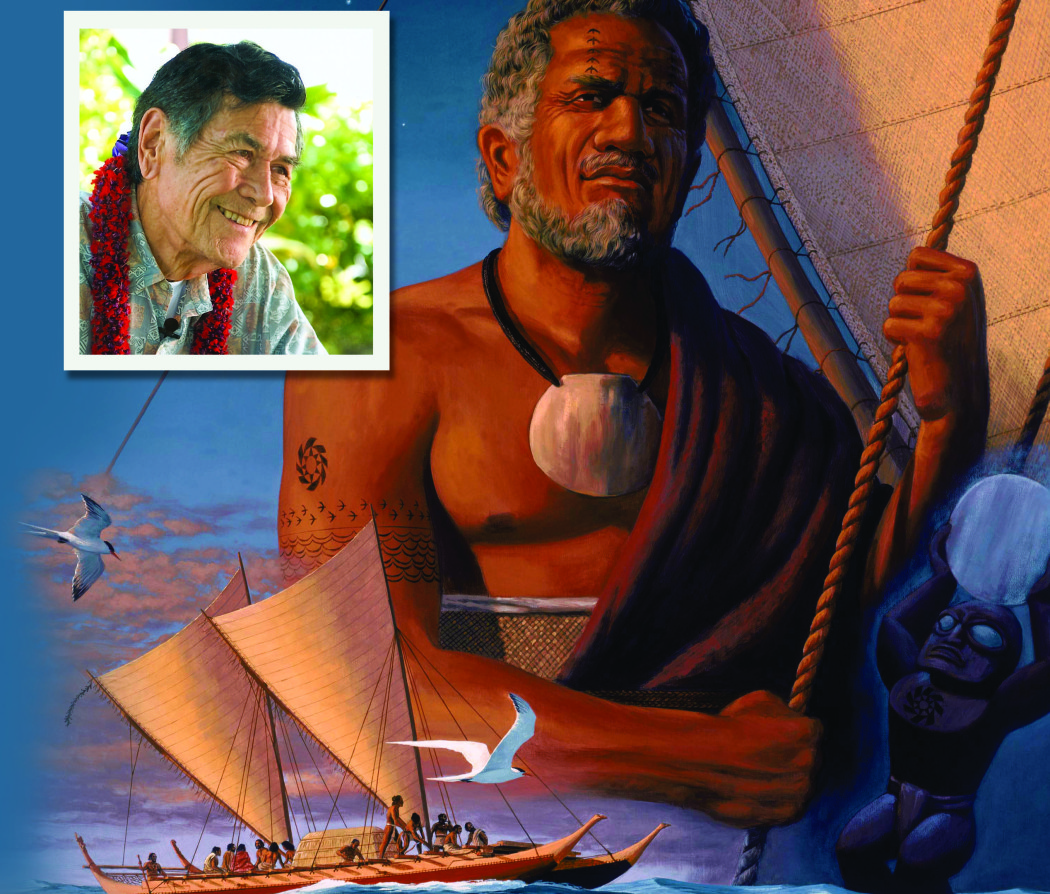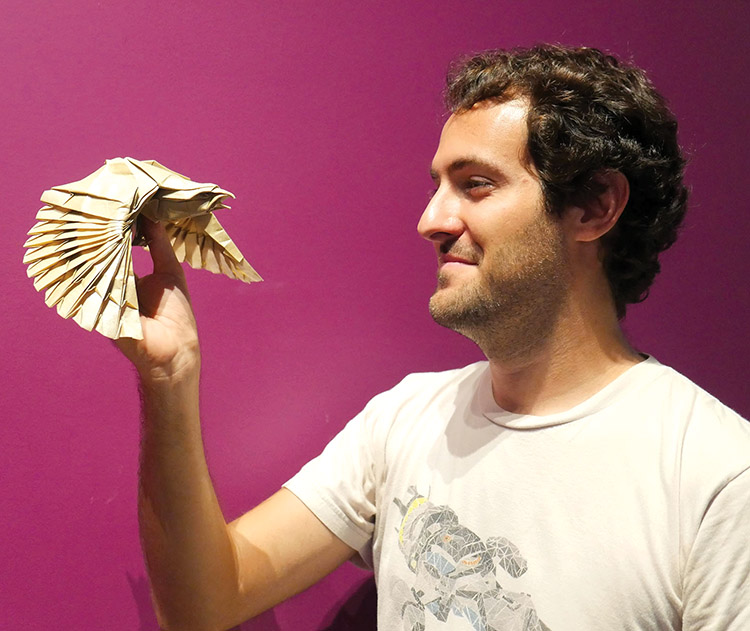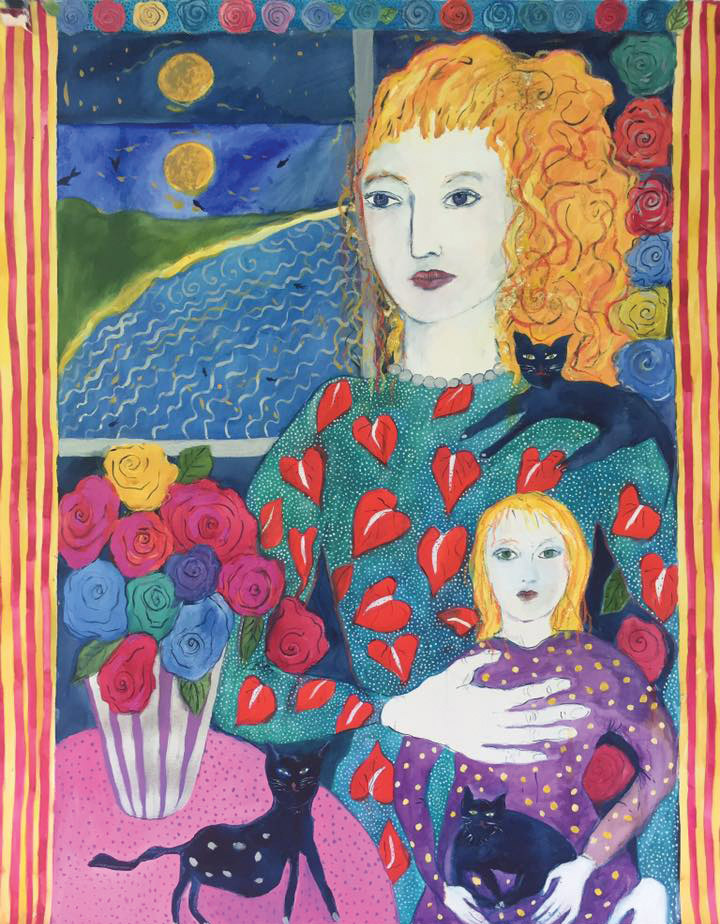
High-Tech Textiles Feature Hawaiian Cultural Motifs
 By Denise Laitinen
By Denise Laitinen
Hilo, Hawai‘i, might not be the first place that springs to mind when you think about cutting-edge clothing manufacturing, but one local company is changing that. Punawai, a digital textile printing company, is using state-of-the-art technology and eco-friendly inks to design, print, and sew women’s apparel. Their work features original Hawaiian plant designs on fine silks, including scarves, wraps, ladies’ tops and men’s neckties. Customers may not realize the technology that’s required to create the stylish pieces but they do appreciate the outcome.
“When we started, people couldn’t believe the quality of the work,” says Punawai Rice who, along with his wife Hokulani Kaikaina, runs the company. “Their reaction was: ‘This is from Hilo? Really?’ People were surprised that so fine a fabric and design came out of Hilo.”
It’s really not surprising though, given Punawai’s love of Hawaiian culture and passion for art. Born and raised on O’ahu, Punawai grew up spending school vacations on the Big Island with relatives. While pursuing a degree in Hawaiian Studies at UH Hilo, he took up hula, which led to meeting another Hilo designer, Sig Zane, a well-known clothing designer. Punawai wound up working for Sig for seven years, teaching himself how to use computers and computer design software along the way. He then pursued work in marketing, but discovered he missed the creativity of art.
“I wanted to get back into art,” explains Punawai. “My original business plan was to do an original line of Hawaiian wear and maybe even print for other people,” he says.
But during the process of researching how to launch his own clothing line, Punawai came to recognize the limitations of the silk screening industry. “We found out that silk screening fabric is a dying art form. I knew we would need to do something else.”
He discovered digital textile printing and was amazed by the new technology. “I saw this digital printer and what it could do: that it could print on fine fabrics and do short runs of material,” he said. “To do a short run on fine fabric was nearly unheard of even just a decade ago. That’s how new the technology is.”
Punawai flew to California to check out the massive machine, which weighs two tons and is 10 feet long and eight feet wide. He was so impressed with the equipment he decided to take the plunge and become the first person in Hawai‘i to use digital textile printing.
It was 2008. The economy was in a freefall, and it was, Punawai admits with a chuckle, the worst possible time to start a business. To make matters worse, the technology was so new that it took several months to learn how to master it.
“It took us over a year to get the learning curve for the machine,” explains Punawai. “The learning curve was so steep that I decided I needed to figure out what I wanted to print first and also think about who is my market. Because of the economy I couldn’t imagine women willing and able to spend lots of money on a new wardrobe,” says Punawai. “But they can accessorize it. And that’s where it took off from.”
It’s a testament to the quality of his work that despite the recession, business has taken off. His designs sell briskly at trade shows and craft fairs on Hawai‘i Island and O‘ahu. And although they started with scarves, the Punawai brand now includes wraps, four types of women’s tops, and men’s ties. The apparel is on display at the Punawai design studio in the Hilo Industrial area, which is open to the public.
“I think what’s really been key to our success is that my blank canvas is my client and what she’s wearing,” says Punawai whose designs are geared toward local professional women ranging from their 30’s to 60’s who may be working, semi-retired or retired.
“The scarves can be worn with jeans or dress pants. Everything we’ve designed and produced is based on what our customer is already wearing,” says Punawai. And therein lies the appeal. Uniquely Hawaiian, the scarves and tops can be layered with existing clothes to instantly dress up a casual outfit or accentuate business clothes. Because they’re made of silk, they add an air of elegance, yet are sheer enough that they don’t feel heavy in hot weather or too stuffy for casual island living. Simply put, you can tell that someone who understands Hawai’i made these clothes.
“The key term for me is relevance,” explains Punawai. “If I can’t picture a color or a design on someone in Hilo then I don’t do it.” He also spends a lot of time thinking about what is relevant to his clients. “What can they wear outside of Hilo? We may be from the country but we are well-traveled. What can our clients wear on a plane to the mainland and not feel out of place.”
A sense of place is important to Punawai. “I want Hilo women to feel proud of who they are and where they come from. Our goal is to add value and integrity to the ‘Made in Hawai‘i’ label.”
“All these things are in the back of my mind when I’m doing design,” he says.
For Punawai, the process of creating a piece of clothing usually starts with a trip to the Imiloa Astronomy Center. “I start outside with my camera and do photo shoots,” he explains. Imiloa is one of his favorite places to go because of its garden of endemic, indigenous, and Polynesian-introduced plants. For instance, if he plans on creating a design featuring the ipu he’ll try to find every stage of the ipu—from vine to fruit to blossom—and photograph it. Other plants featured in Punawai designs include laua’e (fern), kalo (taro), ‘ulu (breadfruit), na’u (Hawaiian gardenia), and awapuhi (white ginger).
He then returns to the studio and starts creating sketches. Selecting colors to go with the design is the next challenge. “The fun part for me is color,” says Punawai, “but it’s also the most difficult part. How do you communicate color? What are the relevant colors in Hilo?”
That he can choose from thousands of colors is a benefit of the new technology. “When you’re doing silk screening on fabric you’re working with a fabric that’s been dyed and add one or two screen colors on top of that,” explains Punawai. “Now with this technology it’s unlimited. I can use as many colors as I want.”
Once the design and colors are finalized, creating silk scarves is a mouse click away. The computer is linked to the digital printer, which uses eco-friendly water-based inks. An added benefit of digital textile printing is that it only prints the size of the pattern, not the entire width of fabric, thereby saving ink and wasted material.
After the design is printed on the silk, it’s run through a dryer machine, which makes the material color- and wash-fast. Then it’s taken to the cutting table where the patterns are cut out, sewn, and ironed. It’s truly a family-run business with his wife and mother often helping out.
The entire process can be as short as one day or longer than a week. “I can design, [select] color, and print all in one day,” says Punawai. “But when you’re talking ladies tops, just working on the pattern could take a week.”
Punawai says the company plans to be around for the long haul. “I love my community. In five years I still see us here,” he says. “We’re not going to be a big production outfit supplying department stares nationwide, we want to stay small and serve Hilo.” ❖
Visit www.punawai.com
Contact writer Denise Laitinen at wahineokekai@yahoo.com


